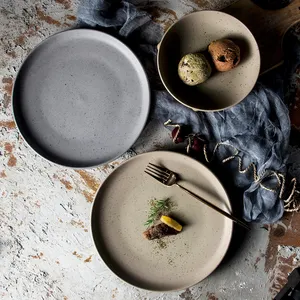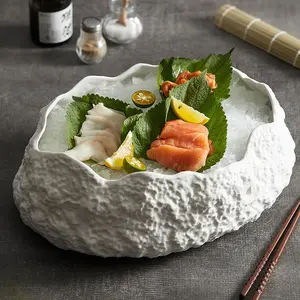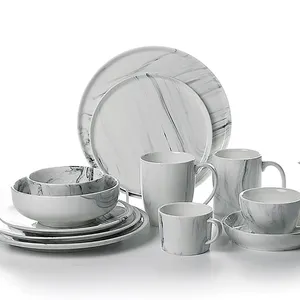A Comprehensive Guide to A and B Grade Porcelain Dinnerware
Porcelain dinnerware is a staple in both homes and restaurants, offering a blend of durability and aesthetic appeal. Among the various grades available, a and b grade porcelain dinnerware stands out for its balance of quality and value. This guide delves into the intricacies of these grades, their applications, and the materials that make them a preferred choice for many.
Understanding A and B Grade Porcelain Dinnerware
The classification into 'A' and 'B' grades is indicative of the quality and finish of the porcelain. A-grade porcelain dinnerware is characterized by its pristine surface and absence of imperfections, while B-grade may have minor flaws, often imperceptible to the casual observer. Both grades are crafted through a rigorous process of firing at high temperatures, which results in a vitrified and glass-like finish that is both beautiful and strong.
Types and Applications
A and b grade porcelain dinnerware encompasses a range of products from plates and bowls to mugs and serving dishes. A-grade pieces are often reserved for formal dining due to their flawless finish, whereas B-grade items are more commonly used for everyday dining due to their excellent value and near-perfect appearance. Despite the differences, both grades are suitable for a variety of settings, from casual eateries to upscale restaurants.
Features and Materials
The allure of a and b grade porcelain dinnerware lies in its features. Porcelain, known for its resilience, is made from kaolin clay and fired at temperatures exceeding 1200°C. This process ensures the dinnerware is non-porous, often making it microwave- and dishwasher-safe. The strength of porcelain dinnerware is complemented by its lightweight nature, especially in bone china variants, which include bone ash for added whiteness and translucency.
Advantages of Porcelain Dinnerware
Choosing a and b grade porcelain dinnerware comes with several advantages. Its durability stands out, resisting chips and cracks during regular use. The material's impermeability makes it hygienic, as it does not harbor bacteria or odors. Additionally, the thermal retention properties of porcelain keep food warmer for longer periods, enhancing the dining experience.
Design and Aesthetics
The aesthetic versatility of a and b grade porcelain dinnerware is evident in the variety of designs available. From minimalist white that showcases culinary creations to intricate patterns that complement decor themes, there is a design for every preference. The glaze applied to porcelain dinnerware not only adds to its beauty but also serves as a protective layer, maintaining the vibrancy of colors and patterns through countless washes.
In conclusion, a and b grade porcelain dinnerware offers a blend of functionality and elegance for any dining occasion. Its robust material properties and wide range of designs make it a practical and stylish choice for both domestic and commercial use. As you explore the extensive selection available, consider the grade that best suits your needs, keeping in mind the balance between perfection and value.









































 浙公网安备 33010002000092号
浙公网安备 33010002000092号 浙B2-20120091-4
浙B2-20120091-4